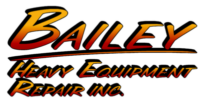How to Boost Heavy Equipment Productivity
How to Boost Heavy Equipment Productivity
In the construction and mining industries, heavy equipment plays a crucial role in getting the job done efficiently and effectively. Maximizing heavy equipment productivity is essential to meet project timelines, reduce costs, and increase profitability. This blog post will explore several strategies and best practices to boost heavy equipment productivity.
1. Proper Equipment Selection and Maintenance
The first step in boosting heavy equipment productivity is carefully selecting the right machines for each task. Understanding the specific requirements of the project and choosing equipment with the appropriate specifications and capabilities is essential. Investing in modern and efficient machinery can make a significant difference in productivity.
However, simply having the right equipment isn’t enough. Regular maintenance is equally important to ensure optimal performance and minimize downtime. Implementing a preventive maintenance program can help detect potential issues before they become major problems, keeping heavy equipment running at its best.
2. Operator Training and Skill Development
The skill and expertise of heavy equipment operators directly impact productivity. Providing comprehensive training programs for operators can significantly improve their performance and efficiency. These programs should include proper equipment operation, safety guidelines, and troubleshooting techniques.
Furthermore, promoting ongoing skill development through workshops, seminars, and certifications will keep operators up-to-date with the latest industry advancements. Skilled operators who are knowledgeable about their equipment can identify and rectify issues quickly, ultimately improving productivity.
3. Effective Communication and Coordination
Efficient communication and coordination among team members are essential for maximizing heavy equipment productivity. Establishing clear channels of communication and using collaborative technologies, such as project management software or mobile apps, can streamline operations.
Regular meetings and briefings can help align the goals of different teams and ensure everyone is on the same page. Fostering an environment of open communication can empower workers to share ideas, address concerns, and make improvements that boost overall productivity.
4. Optimization of Workflows and Processes
Analyzing and optimizing workflows and processes are key steps to increase heavy equipment productivity. Identifying bottlenecks, inefficiencies, and areas for improvement will help streamline operations and eliminate time-consuming tasks.
Implementing lean manufacturing principles, such as the 5S methodology or value stream mapping, can be highly effective in optimizing workflows. These methodologies aim to eliminate waste, standardize processes, and create a systematic approach to work, ultimately boosting productivity.
5. Utilization of Technology and Automation
Harnessing the power of technology and automation is another way to boost heavy equipment productivity. Many advanced systems and software applications are available today to optimize equipment operations and streamline workflows.
For example, telematics systems can track equipment usage, fuel consumption, and performance data to identify opportunities for improvement. Implementing GPS technology can help optimize routes and schedules for better equipment utilization. Automation in tasks like inventory management and equipment maintenance can reduce human errors and save valuable time.
6. Monitoring and Continuous Improvement
Monitoring heavy equipment productivity is vital to identify areas of improvement and measure the effectiveness of implemented strategies. Regularly tracking key performance indicators (KPIs), such as equipment uptime, fuel efficiency, and cycle times, can provide insights into productivity trends and areas that need attention.
Continuous improvement should be an ongoing process, with regular evaluations and adjustments to optimize heavy equipment productivity. Encouraging feedback from operators and incorporating their suggestions can help identify new opportunities for improvement.
Conclusion
Boosting heavy equipment productivity requires a comprehensive approach that addresses equipment selection, maintenance, operator training, communication, workflow optimization, technology utilization, and continuous improvement. By implementing these strategies, construction and mining companies can enhance efficiency, meet project deadlines, and maximize profitability. Remember, productivity is a journey, not a destination, and constant vigilance and adaptation are key to success in heavy equipment operations.
Need a hand improving heavy equipment productivity? Let us help! Contact us today to learn more about what we can do for you!
